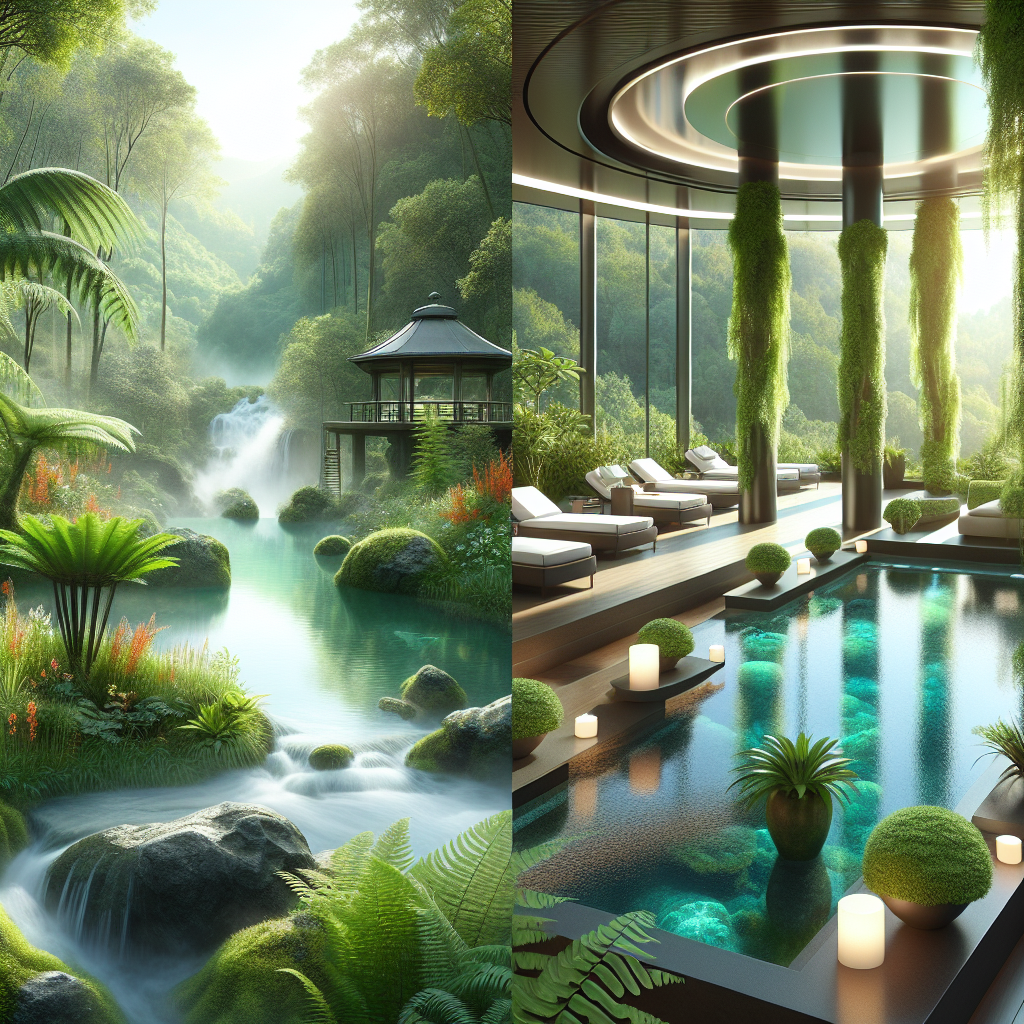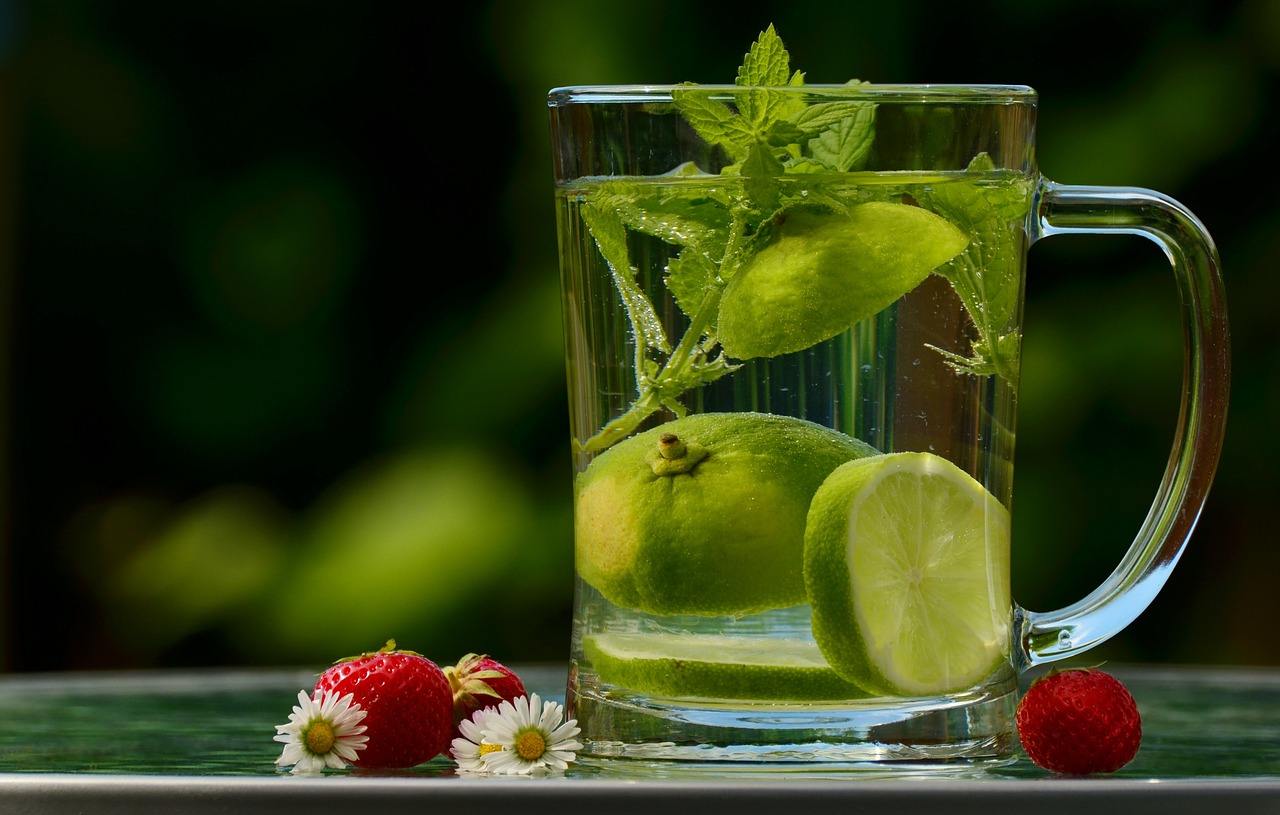Are you struggling to decide between a relaxing soak in a natural hot spring or pampering yourself at a man-made spa facility? Both options offer their own unique benefits, but understanding the differences can help you make an informed choice. Natural hot springs allow you to immerse yourself in the healing powers of Mother Nature, while man-made spa facilities offer a wide range of treatments and amenities tailored to your specific needs. In this article, we will explore the pros and cons of each option, giving you a comprehensive comparison to help you find the perfect retreat for your ultimate relaxation. So sit back, relax, and prepare to discover the wonders of natural hot springs and man-made spa facilities.
1/comparing-natural-hot-springs-with-man-made-spa-facilities-1024x652.jpg" title="Comparing Natural Hot Springs With Man-made Spa Facilities" alt="Comparing Natural Hot Springs With Man-made Spa Facilities" style="max-height: 500px; max-width: 100%;" />
Location
Natural Hot Springs
Natural hot springs are found in various locations around the world, offering a unique and picturesque setting for relaxation and rejuvenation. These springs are often nestled within stunning natural landscapes, such as mountains, forests, or coastal areas. Whether you prefer soaking in warm waters surrounded by snow-capped mountains or enjoying the serene beauty of a secluded forest, natural hot springs provide a truly enchanting experience.
Man-made Spa Facilities
On the other hand, man-made spa facilities are strategically located in urban areas or resorts, providing convenience and accessibility to visitors. These facilities are often thoughtfully designed to create a tranquil atmosphere, offering an oasis of peace amidst the hustle and bustle of city life. While they may not have the same natural beauty as hot springs, man-made spas compensate by creating a serene ambiance through landscaping, architecture, and interior design.
Source of Water
Natural Hot Springs
Natural hot springs get their water from underground volcanic activity, with the water being heated by geothermal heat deep within the Earth’s crust. As the hot water reaches the surface, it brings with it a variety of minerals, such as calcium, magnesium, and sulfur, which are believed to have therapeutic properties. These minerals can provide potential health benefits, including soothing muscle aches, improving circulation, and promoting overall relaxation.
Man-made Spa Facilities
In contrast, man-made spa facilities utilize heated water from conventional sources, such as boilers or heating systems. While the water in these facilities may be treated with chemicals to ensure cleanliness, it does not naturally contain the same beneficial mineral content as hot springs. However, man-made spas often compensate for this by offering various treatments and therapies that can provide similar health and wellness benefits.
Mineral Content
Natural Hot Springs
One of the key attractions of natural hot springs is the mineral-rich water they contain. The unique mixture of minerals, such as sulfur, silica, and sodium, can have a positive impact on your skin, joints, and overall well-being. Soaking in these mineral-rich waters is believed to aid in relieving skin conditions, reducing inflammation, and detoxifying the body. Each hot spring has its own distinct mineral composition, offering a range of therapeutic properties.
Man-made Spa Facilities
While man-made spa facilities may not naturally contain the same mineral-rich water, they often incorporate minerals and other natural ingredients into their treatments. Many spas offer specialized treatments using mineral-rich products, such as seaweed wraps, salt scrubs, or mud baths, to provide similar benefits to those obtained from natural hot springs. By using these products, man-made spas aim to recreate the healing experience of hot springs within their own controlled environment.
Temperature
Natural Hot Springs
The temperature of natural hot springs varies depending on their location and depth. Some springs offer hot water that can reach temperatures of up to 120 degrees Fahrenheit (49 degrees Celsius), while others provide a more moderate warmth suitable for comfortable soaking. The temperature of natural hot springs is typically regulated by the underlying geothermal activity, creating a naturally soothing and therapeutic experience.
Man-made Spa Facilities
In man-made spa facilities, the temperature of the water is carefully controlled to ensure comfort and safety for visitors. The water is heated to a specific temperature range, usually between 95 to 105 degrees Fahrenheit (35 to 40 degrees Celsius), which is considered optimal for relaxation and promoting circulation. By maintaining a consistent temperature, man-made spas aim to create a pleasant and enjoyable experience for their guests.
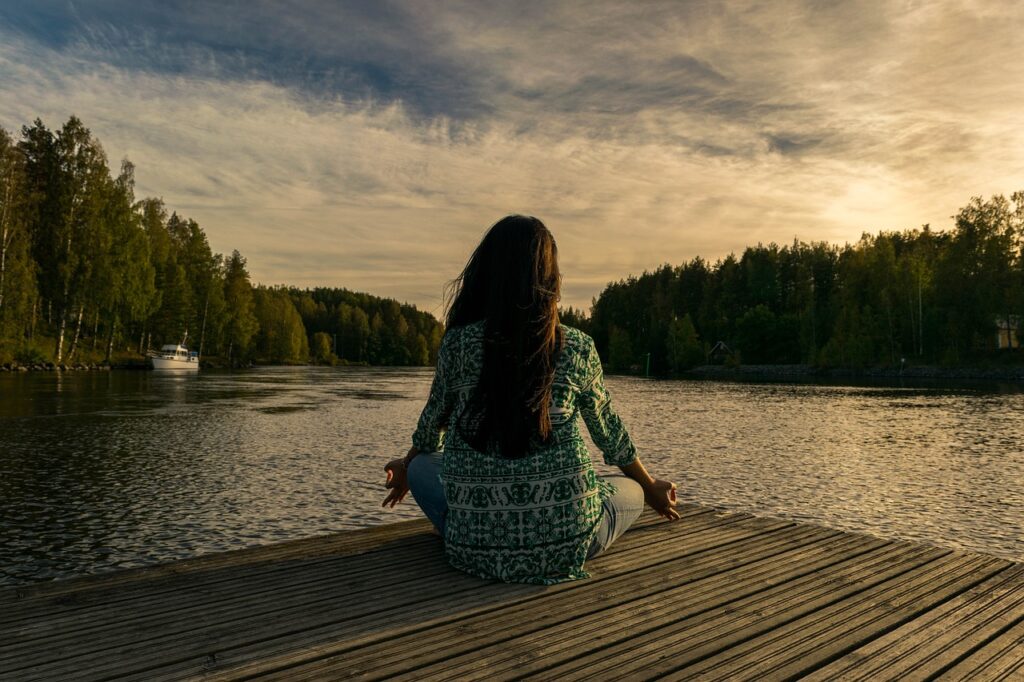
Purification and Filtration
Natural Hot Springs
The water in natural hot springs is constantly flowing and replenishing, thanks to the underground sources that feed them. This natural flow helps to maintain the water quality, as it is constantly being refreshed and filtered by the Earth. The mineral-rich water of hot springs is often believed to have natural antibacterial properties, reducing the need for extensive purification methods.
Man-made Spa Facilities
In man-made spa facilities, water is often treated and maintained using advanced filtration and purification systems. These systems ensure that the water is clean and free from harmful bacteria, allowing visitors to enjoy a hygienic bathing experience. Additionally, regular maintenance and monitoring are conducted to ensure the water quality meets safety standards. Although man-made spas may lack the natural purification process of hot springs, their rigorous maintenance and filtration systems ensure a clean and safe environment.
Availability of Treatments
Natural Hot Springs
While natural hot springs provide a serene and tranquil environment for soaking, they usually lack the range of treatments and therapies found in man-made spas. However, some hot springs do offer limited services, such as massages or facials, provided by on-site professionals. These treatments are often designed to complement the natural healing properties of the hot springs, providing an enhanced wellness experience.
Man-made Spa Facilities
Man-made spa facilities are renowned for their extensive menu of treatments and therapies. From massages and facials to body wraps and aromatherapy, these spas offer a wide range of services tailored to individual needs and preferences. Highly trained professionals provide these treatments, ensuring the highest quality of care and expertise. Whether you seek relaxation, rejuvenation, or specific therapeutic benefits, man-made spas offer a myriad of options to cater to varied preferences.
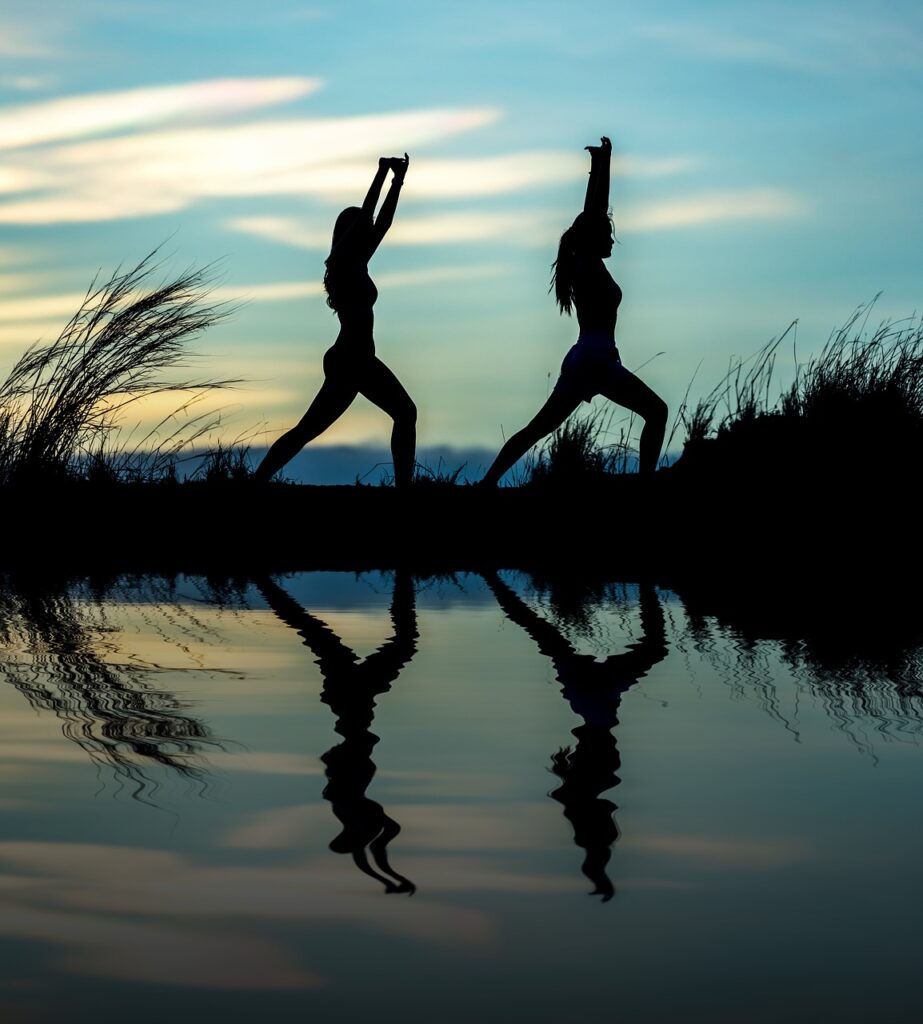
Architecture and Ambiance
Natural Hot Springs
The architecture and ambiance of natural hot springs are shaped by their surroundings. These springs often blend seamlessly with the natural environment, utilizing rustic materials such as stone, wood, and earth tones. The serene beauty of the landscape and the soothing sounds of the water create a calming and inviting atmosphere, allowing visitors to fully immerse themselves in nature’s embrace.
Man-made Spa Facilities
Man-made spa facilities pay meticulous attention to their architecture and ambiance to create a serene and luxurious atmosphere. These facilities often feature sleek and modern designs, using elements such as glass, metal, and water features to evoke a sense of tranquility. The interior spaces are thoughtfully designed and decorated with calming colors, soft lighting, and comfortable furnishings, providing a sanctuary for relaxation away from the outside world.
Crowd and Atmosphere
Natural Hot Springs
The crowd and atmosphere at natural hot springs can vary depending on the location and accessibility. Some springs may attract a steady stream of visitors seeking relaxation and wellness, while others may offer a more secluded and intimate experience. Regardless of the crowd, the atmosphere at hot springs tends to be laid-back, with a focus on connecting with nature and enjoying the therapeutic benefits of the mineral-rich waters.
Man-made Spa Facilities
Man-made spas typically have a more controlled and organized atmosphere, often operating with appointment-based systems to ensure a tranquil environment for guests. Depending on the spa’s size and popularity, the crowd can range from intimate and exclusive to social and bustling. The ambiance is usually characterized by a sense of luxury and professionalism, with guests encouraged to unwind, indulge, and enjoy the range of treatments and amenities available.
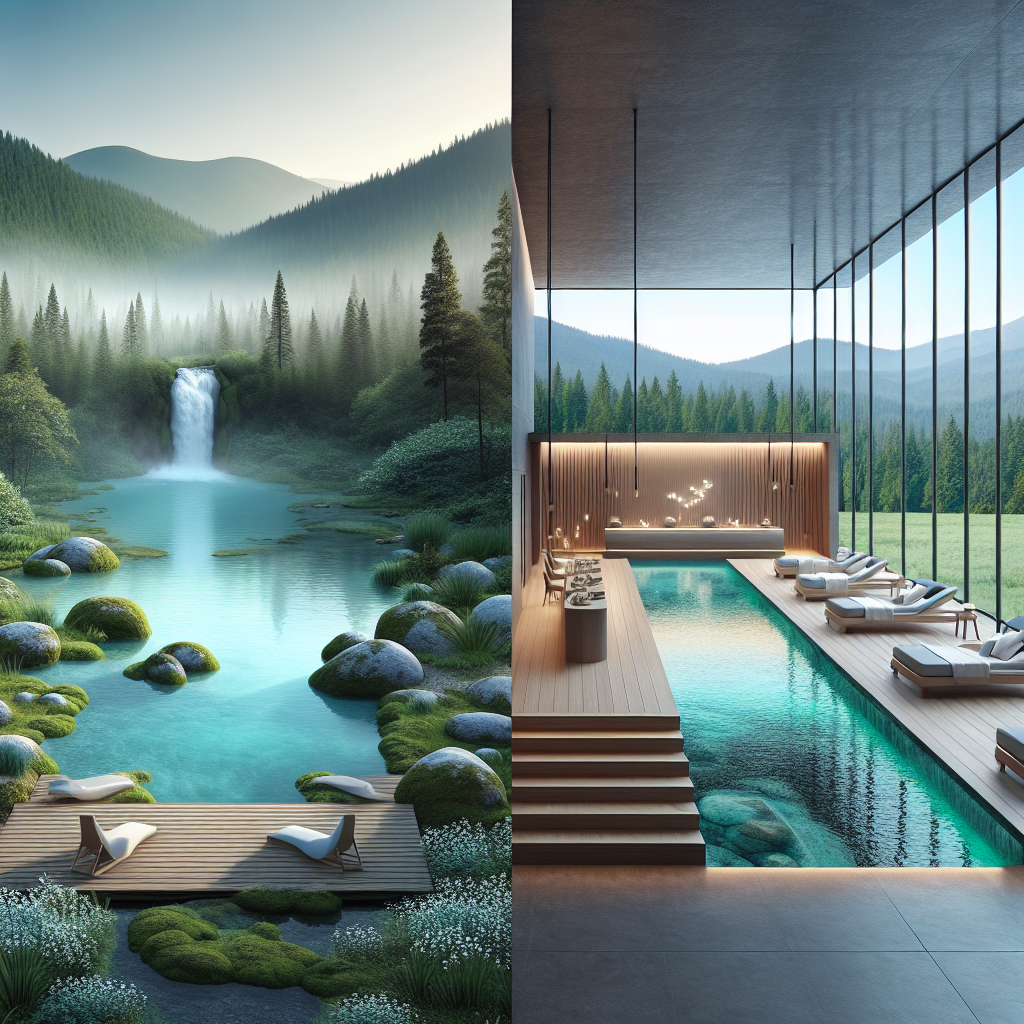
Cost
Natural Hot Springs
The cost of visiting natural hot springs can vary greatly depending on their location and amenities. Some hot springs are freely accessible to the public, while others charge a nominal entry fee. In certain cases, hot springs may be part of a larger resort or wellness facility, where additional charges may apply for access to facilities and treatments. Overall, natural hot springs offer a range of options to accommodate different budgets, with the option to enjoy the springs themselves or indulge in additional services.
Man-made Spa Facilities
Man-made spa facilities often have a wider range of services and amenities, which usually come at a higher cost compared to natural hot springs. The price of treatments and access to facilities can vary depending on factors such as location, reputation, and exclusivity. However, these facilities often offer packages and promotional deals, making luxurious spa experiences more accessible and affordable for a wider range of individuals.
Maintenance and Regulations
Natural Hot Springs
Natural hot springs require relatively minimal maintenance, as the water is constantly replenished by natural sources. However, it is essential to adhere to regulations and guidelines set by local authorities to ensure the protection of the springs and the surrounding ecosystem. This may include limiting the number of visitors, implementing restrictions on activities, and establishing measures for waste management and preservation of the natural environment.
Man-made Spa Facilities
Man-made spa facilities require regular maintenance to ensure cleanliness, safety, and functionality. Spa owners and operators are responsible for complying with health and safety standards, including proper sanitation and regular inspections of equipment. These facilities often have their own set of regulations and guidelines to ensure the well-being of guests and staff, such as proper handling of chemicals and adherence to hygiene protocols.
In conclusion, natural hot springs and man-made spa facilities each have their own unique attributes and advantages. Natural hot springs provide a breathtaking setting and mineral-rich waters that offer therapeutic benefits, while man-made spas offer a wider range of treatments and a controlled environment. Ultimately, the choice between the two depends on personal preferences, accessibility, and desired experience. Whether you seek to reconnect with nature or indulge in luxury, natural hot springs and man-made spa facilities both have the power to rejuvenate your mind, body, and soul.
